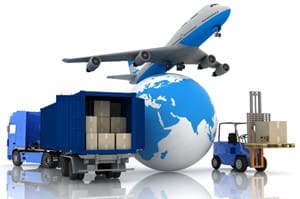 For more than a year, global supply chains have been buffeted by one major disruption after another. The surging Delta virus, devastating floods in China and Germany and cyber attacks on South African ports are amongst the latest in a series of events that continue to send shock waves throughout the system.
For more than a year, global supply chains have been buffeted by one major disruption after another. The surging Delta virus, devastating floods in China and Germany and cyber attacks on South African ports are amongst the latest in a series of events that continue to send shock waves throughout the system.
The impact? Raw materials are in short supply, many manufacturers have temporarily mothballed production lines, transportation costs are rising, and labor is getting tight on our roadways, railways and ocean vessels. We will certainly be feeling the repercussions throughout a bumpy holiday shopping season — and beyond.
In light of all of this, I’d posit we can no longer look at the events of the last year as an aberration. Supply chain management is now synonymous with “volatility management”. So how do we adjust to this new reality?
If you’re Home Depot, you reserve an entire ship for your own exclusive use. Don’t get me wrong — I applaud Home Depot management. It’s a creative and gutsy move at a time when there aren’t many great options for shippers. But it’s no formula for long-term success, and not every shipper can afford it.
Digital transformation is the formula. And for our global supply chains, that transformation cannot happen fast enough.
Real-time transportation visibility platforms tell shippers and their broker/carrier partners where their freight is at any point on its journey. Using AI and predictive analytics, we make it possible to anticipate and mitigate the impact of disruptions and delays, whether from bad weather, port shutdowns or overloaded distribution centers.
There is now a robust and growing market for real time transportation visibility solutions, which help shippers, carriers and the entire ecosystem run more cost-effective and efficient logistics operations. But we have to go further.
It’s no longer sufficient to only know where products are while in transit. We should know how much product is sitting in the port of origin. We should be able to see, with the click of a button, how much product is at the port of destination. And what is sitting in the warehouse. And at the cross-dock. And in the rail car. Until we have this kind of pervasive visibility, inventory management will continue to be largely an exercise in futility.
Real-time visibility into “static goods” — wherever they may be — is the foundation for managing through volatility. From there, we can upgrade supply planning systems, streamline procurement, revamp warehousing and distribution and, perhaps most importantly, enable collaboration across vast networks of supply chain partners to keep goods flowing.
We’ve seen firsthand the many positive effects of collaboration based on real-time transportation visibility data, as partners and even competitors — working off of one source of the truth — find efficiencies that benefit multiple partners. The ROI will only multiply with visibility into supplies and goods from end to end. It’s easy to foresee, for example, smaller importers and startups pooling their interests to more effectively compete against larger players, in much the same way ShipBob has empowered smaller ecommerce companies to create leverage together.
It’s clear that volatility is here to stay, and that every tremor affects different parts of the supply chain in many different ways, far into the future. Pervasive real-time visibility and collaboration are our best bets to manage through the uncertainty.
Matt Elenjickal is the Founder and Chief Executive Officer of FourKites. He founded FourKites in 2014 after recognizing pain points in the logistics industry and designing elegant and effective systems to address them. Prior to founding FourKites, Matt spent 7 years in the enterprise software space working for market leaders such as Oracle Corp and i2 Technologies/JDA Software Group. Matt has led high-impact teams that implemented logistics strategies and systems at P&G, Nestle, Kraft, Anheuser-Busch Inbev, Tyco, Argos and Nokia across North America, Western Europe and Latin America. Matt is passionate about logistics and supply chain management and has a keen sense for how technology can disrupt traditional silo-based planning and execution. Matt holds a BS in Mechanical Engineering from College of Engineering, Guindy, an MS in Industrial Engineering and Management Science from Northwestern University, and an MBA from Northwestern’s Kellogg School of Management. He lives in Chicago.
















 Supply chain is an industry slow to change. Large shippers still use Excel spreadsheets to plan their operations, and even the most beneficial logistics technology is sometimes looked at warily. If it isn’t broken, these stakeholders reason, there’s nothing to fix.
Supply chain is an industry slow to change. Large shippers still use Excel spreadsheets to plan their operations, and even the most beneficial logistics technology is sometimes looked at warily. If it isn’t broken, these stakeholders reason, there’s nothing to fix. I am working on my latest Transportation Execution and Visibility Systems study, which looks at the total size of the market, the forecasted growth through 2025, and the leading suppliers across a number of categories including industry, region, customer size, and mode. As I mentioned in an earlier post on the
I am working on my latest Transportation Execution and Visibility Systems study, which looks at the total size of the market, the forecasted growth through 2025, and the leading suppliers across a number of categories including industry, region, customer size, and mode. As I mentioned in an earlier post on the 

